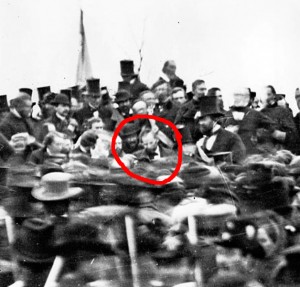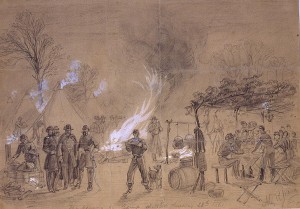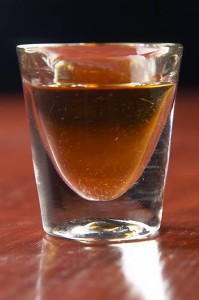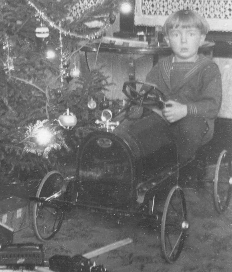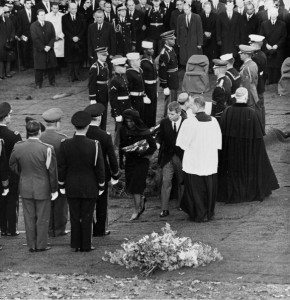
John F. Kennedy. Funeral and temporary grave.
November 25, 1963
1. What event do we see in this picture?
In this picture we see a burial.
2. What kind of attire are the people wearing?
The people are dressed in black (dark) clothes.
3. Why are they dressed this way?
They are dressed this way, because they are in mourning.
4. What is the woman carrying?
The woman is carrying an American flag.
5. Do you recognize who the woman is? Can you guess which famous event this is?
The woman is Jackie Kennedy. This is the burial of President Kennedy, November 25, 1963.
6. What is a polite way of referring to a dead body?
A polite way of referring to a dead body is to say “the deceased.”
7. Who prepares the body for burial?
A mortician (also called an undertaker) prepares the body for burial.
8. What is the name of the process of preserving a body for burial?
Embalming is the process of preserving a body for burial.
9. What do you call the container the body is placed in?
The container that the body is placed in is called a casket, or a coffin.
10. What do you call the sadness that you feel when someone dies?
The sadness that you feel when someone dies is called grief.
11. What is the name of the memorial service for the person who died?
The memorial service for a person who has died is called a funeral.
12. What is another name for “burial”?
Another name for burial is interment.
13. What is the name of the little building that a body is interred in if it does not go into the ground?
If a body is not buried in the ground, it may be placed in a crypt or mausoleum.
14. What is an alternative to burial?
Cremation is an alternative to burial.
15. What is the name of the container the ashes are placed in?
The ashes from cremation are placed in an urn.
16. What is used to mark the grave?
A headstone, gravestone, or tombstone is used to mark the grave.
17. How is the casket transported to the cemetery?
The casket is transported to the cemetery by a hearse.
18. Who carries the casket to and from the hearse?
Pallbearers carry the casket to and from the hearse.
19. When a member of the military dies, how may he be honored?
When a member of the military dies, he may be buried with full military honors.
20. What is a wake for a public figure called?
A wake for a public figure is called “lying in state.”
Paragraph: At a Funeral
What sort of mourning or funeral customs does your culture observe? How are people buried? What does a typical grave look like? Write a brief paragraph about your culture’s funeral or mourning customs.
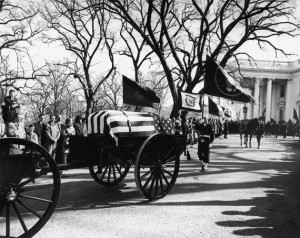
Kennedy funeral procession leaves White House.
November 25, 1963
It is customary to wear black to a funeral. Black is the color of mourning, and in the old days, a widow would dress in black for a period of time following her husband’s death. It was also part of tradition for her to wear a veil over her face. If black clothes are not worn to the funeral, then the clothes should at least be dark colored, conveying somberness. A military man may wear his dress uniform for the funeral, especially if the deceased was also a member of the armed forces. If it is a funeral for a policeman or fireman who died in the line of duty, then his fellow policemen/firemen would also wear their dress uniforms to the funeral.
In the picture of Kennedy’s burial, you can see that Jackie Kennedy is dressed in black, and a veil is covering her face. You can also see several members of the military – Army, Navy, Air Force, Marines, Coast Guard, and Special Forces – attending to the graveside service as a military honor guard. In addition to being Commander-in-Chief (as all Presidents are), President Kennedy had served in the Navy in World War II, so the American flag draped his coffin, and he was buried with military honors at Arlington National Cemetery in Virginia. If you go there today, you will see that his grave is marked with an always-burning fire, called an “eternal flame.”
Google

